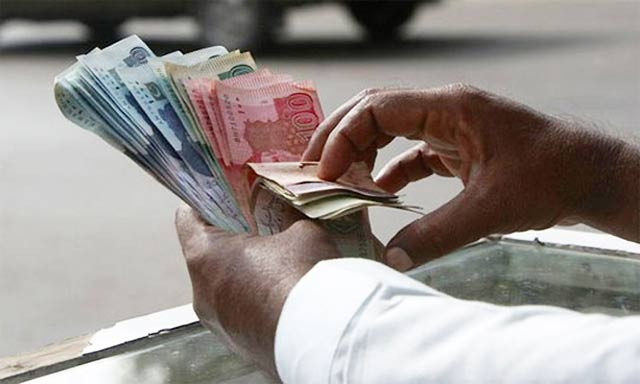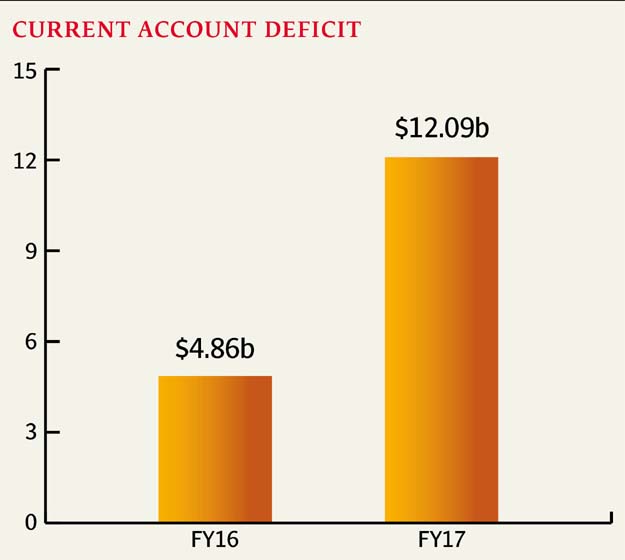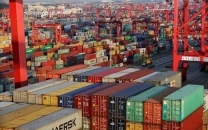FY17: Current account deficit widens by a massive 149%
As a percentage of GDP, the deficit rises to 4% compared to just 1.7% in FY16

As a percentage of GDP, the deficit rises to 4% compared to just 1.7% in FY1. PHOTO: REUTERS
With the difference between exports and imports being the biggest determinant of the current account balance, a deficit or surplus reflects whether a country is a net borrower or net lender with respect to the rest of the world.
The enormous increase in the deficit suggests that the government has been unable to manage its balance of payments position over the medium and long run.
Pakistan pays $4.8b in external debt servicing
The current account deficit has even exceeded the harshest estimates of some government critics who were expecting the deficit of about $8 billion by the end of June 2017. The deficit is growing due to heavy debt servicing, recovering oil prices and weak exports.

Analysts say in the light of falling foreign currency reserves, Pakistani rupee’s depreciation and monetary policy tightening in the next few months cannot be ruled out.
As a percentage of gross domestic product (GDP), the deficit rose to 4% in FY17 as opposed to just 1.7% in the previous year.
In FY17, Pakistan exported goods worth $21.66 billion compared to exports valuing $21.97 billion in FY16, reflecting a year-on-year decrease of 1.4%.
However, total imports were valued at $48.54 billion as opposed to $41.25 billion in FY16, up 17.6%.
Balance of trade in both goods and services at the end of FY17 was negative $30.45 billion compared with a deficit of $22.68 billion in the previous fiscal year.
Worker remittances amounted to $19.30 billion in FY17, down 3% from the previous year, when they totalled $19.91 billion.
Remittances make up almost half of the import bill of Pakistan and cover the deficit in trade of goods account. Some experts believe that the slowdown in remittances is another worrying sign for the country.
IMF data bloats Pakistan forex reserves by $3bn
Moreover, Pakistan has also been facing low levels of foreign direct investment (FDI) in recent years.
In FY17, the FDI increased just 5% to $2.41 billion compared to $2.30 billion in the previous year.
According to the Board of Investment, Pakistan received a record high FDI of $5.4 billion in fiscal year 2008, but since then the country has been struggling to touch even half of that milestone.
Published in The Express Tribune, July 20th, 2017.
Like Business on Facebook, follow @TribuneBiz on Twitter to stay informed and join in the conversation.



















COMMENTS
Comments are moderated and generally will be posted if they are on-topic and not abusive.
For more information, please see our Comments FAQ